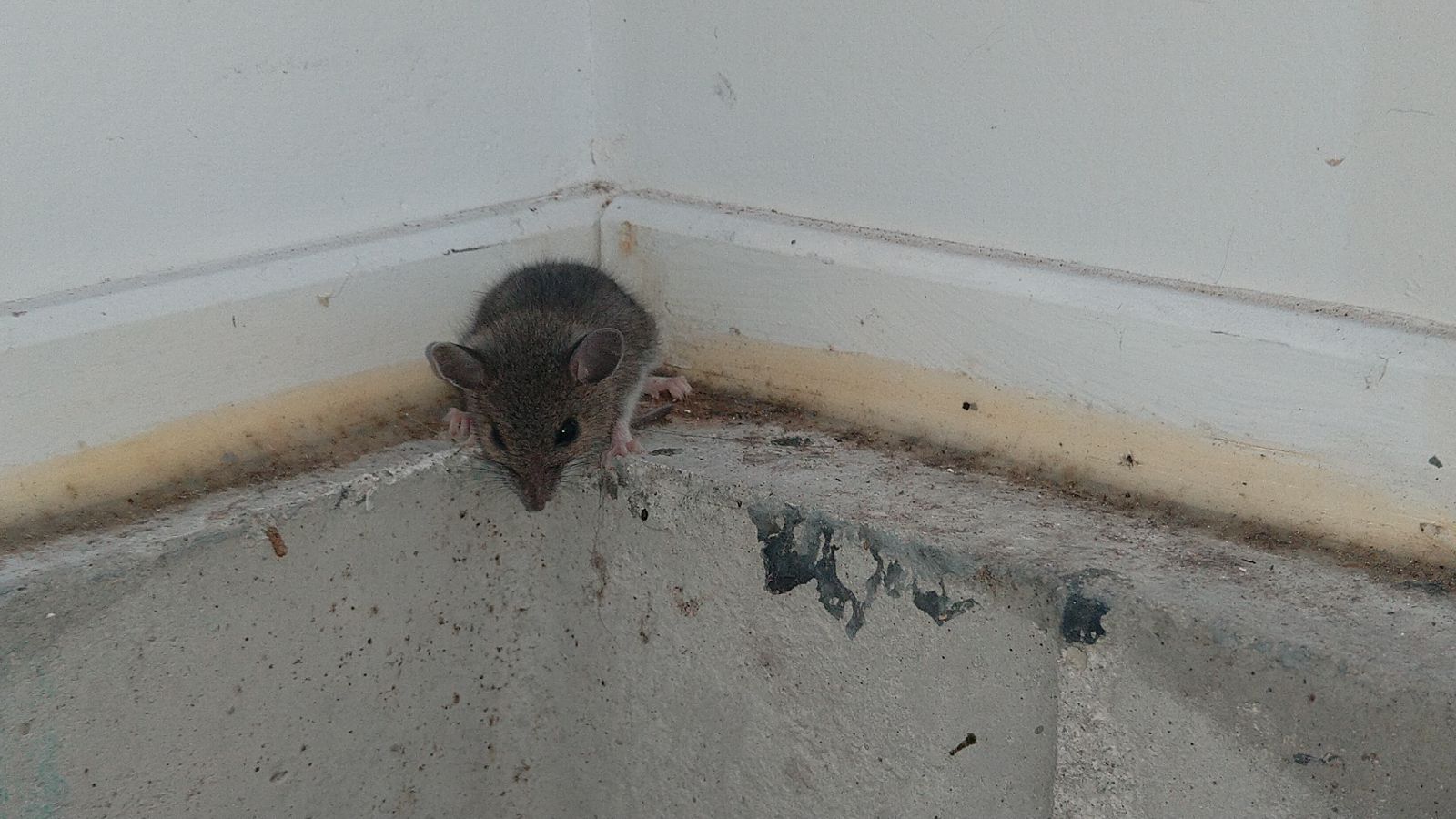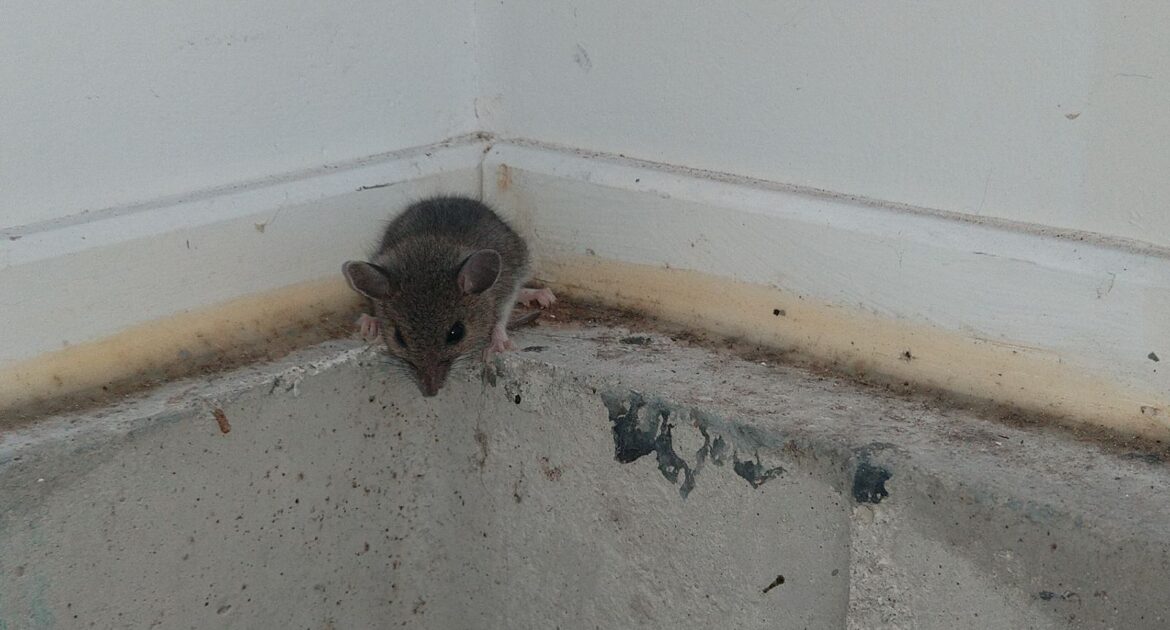If you’ve spotted small, dark specks in your kitchen or basement, they might not be dirt—they could be mouse droppings. These tiny pellets are more than just a mess; they’re clues about a potential rodent problem. Droppings can indicate the size of the infestation, where mice are active, and how they’re getting inside.
By understanding what mouse droppings reveal, you can take action early to protect your home and family. At Skedaddle Humane Wildlife Control in Blaine, Minnesota, we help you recognize these warning signs and respond effectively.
In this guide, we’ll explain what mouse droppings look like, how they provide details about the problem’s scale, and how they can point to entry points and nesting areas. We’ll also cover the importance of proper cleanup to avoid health risks. Whether it’s one mouse or many, these signs can help you make smart decisions and act quickly.
What Do Mouse Droppings Look Like?
The first step in solving the problem is knowing exactly what you’re looking at. Mouse droppings are quite small, typically measuring about a quarter-inch in length. They tend to be dark in color and have a pointed shape at the ends, like tiny seeds. Their size and shape make them distinct from waste left behind by larger animals.
Sometimes, homeowners confuse these pellets with droppings from rats or bats, so it’s important to know the difference. Rat feces, for example, are larger—sometimes up to half an inch long—and more oval in shape. Meanwhile, bat guano has a shiny, crumbly texture due to the insect diet of these creatures. Mouse evidence is smoother and firmer in comparison. By identifying these key features, you can confirm you’re dealing with rodents at play.
When searching for these signs, focus on areas that provide a food source or shelter. Common places to check include:
- Kitchen cupboards
- Pantry corners
- Along baseboards
- Behind appliances
- Under sinks
- Storage areas like basements or attics
By focusing your efforts here, you’ll uncover valuable clues.
What Droppings Tell You About the Size of the Infestation
Once you’ve spotted droppings, the next question is how serious the situation is. The scale of the waste gives you a pretty clear answer. Small clusters or occasional droppings in one area may suggest just a couple of rodents venturing out. These cases are usually easier to handle if addressed quickly.
Widespread droppings, found in multiple rooms or runways, paint a different picture. This indicates a larger group has moved in and established a routine. Finding droppings on both floors of the house or in storage and living areas points to a growing and active situation.
If you see a steady increase in the amount over time, it’s a warning that things may escalate without intervention. Acting quickly in these circumstances isn’t just about removing the animals—it also limits the damage to your property and reduces health concerns.
Droppings Are a Clue to Recent Activity
Not only do droppings tell you how many rodents you’re dealing with, but they also offer insight into how recently they were in your space. Fresh droppings are dark in color and slightly soft to the touch. Though you shouldn’t handle them, a closer look may reveal shiny or damp surfaces on fresher waste. This signals active traffic in those areas.
Older droppings will appear dull, dry, and brittle. They may crumble when touched, suggesting the animals have moved on or are visiting less frequently. By keeping track of fresh or older droppings, you can identify the hotspots of recent movement, giving you clear zones to focus your efforts on.
For example, if you find a trail leading from a cabinet to a small gap in a wall, that consistency tells you it’s a route rodents use often. Focusing attention there—whether through sealing gaps or hiring professionals—means you’re likely striking at the root of the problem.
What Droppings Reveal About Entry Points
Rodents don’t leave droppings randomly. They often deposit them close to food, entry sites, or travel paths. If you see them near doors, windows, or vents, you’re looking at a possible access point. These areas should be sealed to stop animals from coming in freely.
Pellets along baseboards, behind furniture, or in corners signal pathways they’re using regularly. Follow the trail to see where they may pop in and out. Finding waste on or near insulation or wiring in basements or attics is another red flag. This suggests nesting areas are nearby, and rodents may be causing hidden damage to critical parts of your home.
By addressing these entry points early, you can break the cycle of animals entering, nesting, and returning for food. Focusing on physical barriers—like ensuring siding and vents are secure—adds an important layer of protection.
Health Risks Associated with Mouse Droppings
Finding waste in your house isn’t just unpleasant—it can also be dangerous. The waste that rodents leave behind carries serious health risks you should know about. These risks range from spreading harmful diseases to contaminating your living environment.
Here’s what you need to understand about the dangers and why getting it handled professionally matters.
- Diseases Carried by Rodents: Rodents are known to carry diseases like Hantavirus and salmonella, which are dangerous to humans. Hantavirus can be spread through the dust that comes from dried waste and urine, causing severe respiratory issues. Salmonella, on the other hand, is most commonly transferred when food or surfaces have been contaminated, leading to stomach issues like diarrhea and cramping.
- Contamination of Food, Water, and Air: Waste left near stored food or water sources can easily lead to contamination, making what you eat and drink unsafe. Plus, waste particles may become airborne—especially when disturbed by cleaning—affecting the air quality and potentially causing respiratory problems. Even small traces can create a health risk if they go unnoticed.
- Increased Risk to Harmful Bacteria or Viruses: Attempting to clean it yourself can increase the risk of exposure to harmful bacteria or viruses. Professionals know how to handle these spaces safely, using specialized tools and methods to ensure that the area is properly disinfected. This lowers the risk of further contamination in your living space and keeps your family safe.
If you’ve noticed these concerns in your house, calling for help is a smart first step. We encourage homeowners to prioritize safety by considering professional services like mice removal in Blaine to address both prevention and cleanup. Protecting your space from these hazards makes all the difference for your peace of mind!
Mouse Control is Just a Call Away
Mouse droppings might seem like an unpleasant discovery, but they give you vital information. The size, placement, and freshness of these signs provide insights into the scale of the issue, how active it is, and where entry points or nests are hiding. Knowing these details can save you from growing headaches, whether it’s food contamination, property damage, or hidden health hazards.
If this all feels overwhelming, don’t worry—help is just a call away. At Skedaddle Humane Wildlife Control in Blaine, Minnesota, we specialize in safe, effective removal and prevention methods. Our expertise helps protect your family and home for the long haul, and we pride ourselves on doing it humanely.
If you’ve seen evidence of a mouse in your house or you’re concerned about how to protect your home from wildlife, now’s the time to take action. Whether you need help with mice removal in Blaine or want advice on safeguarding your property for the future, we’re here for you. Rest easy, knowing your space is in the right hands.




